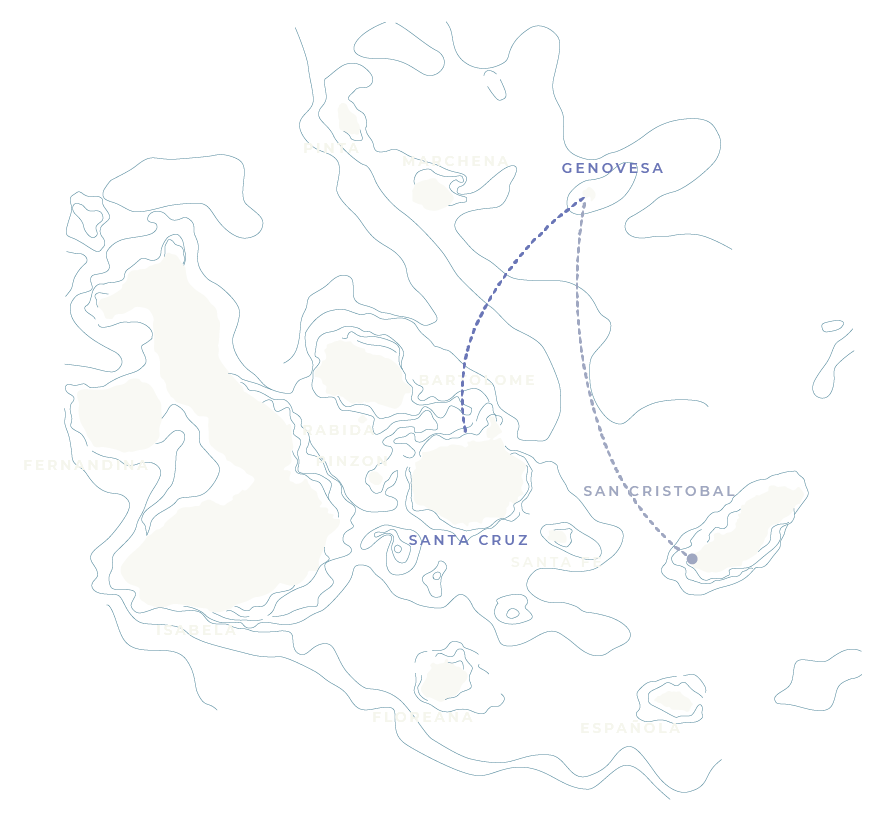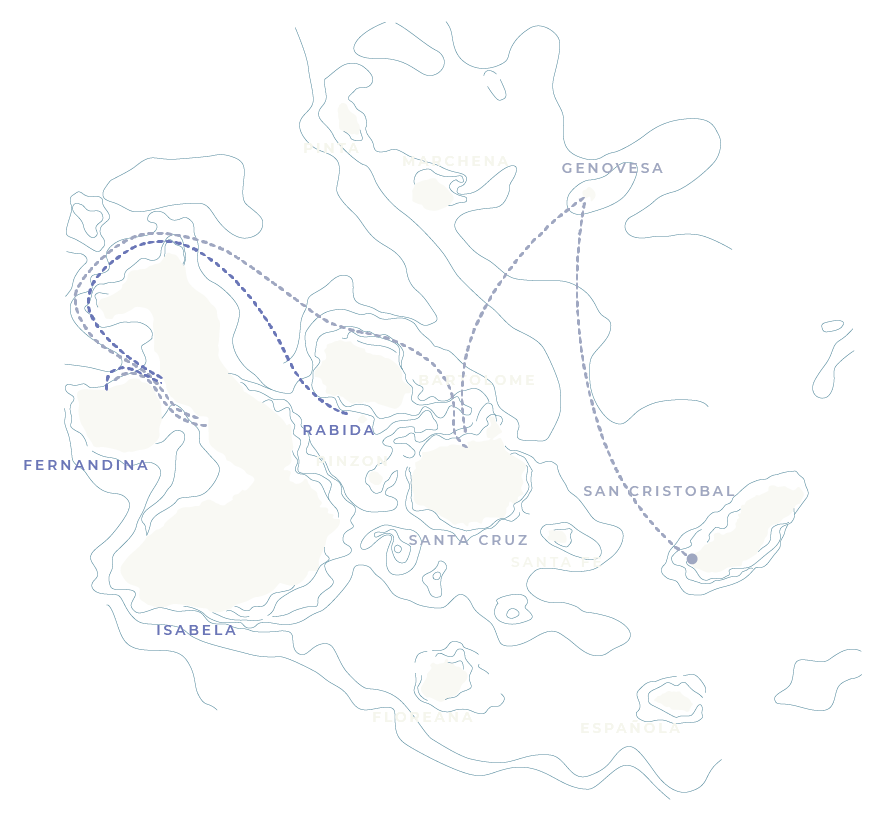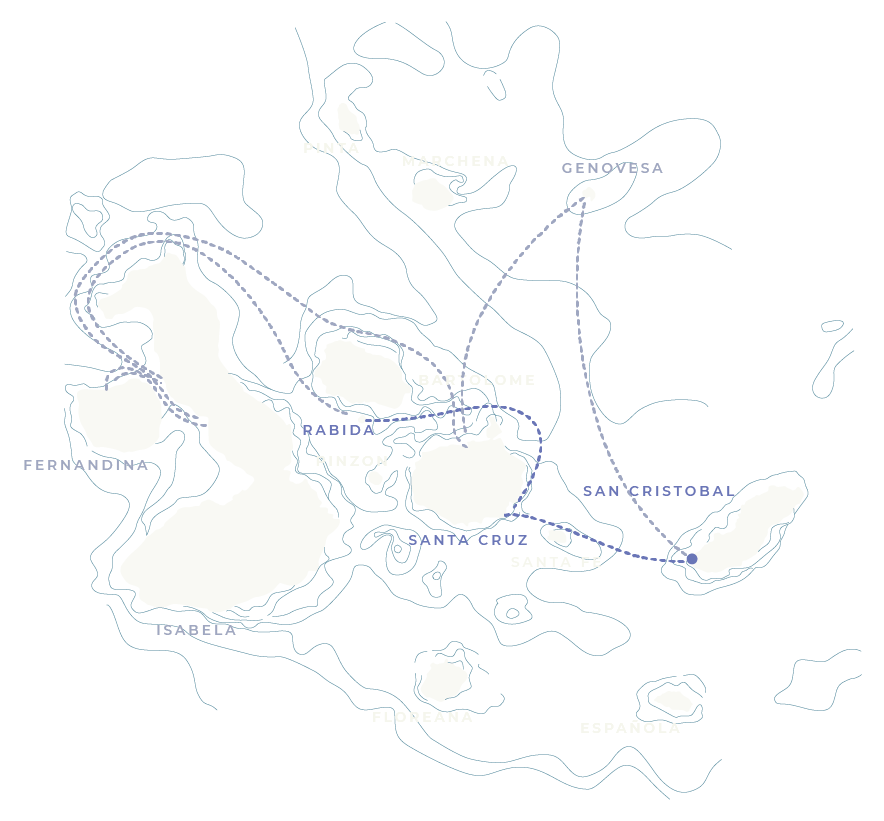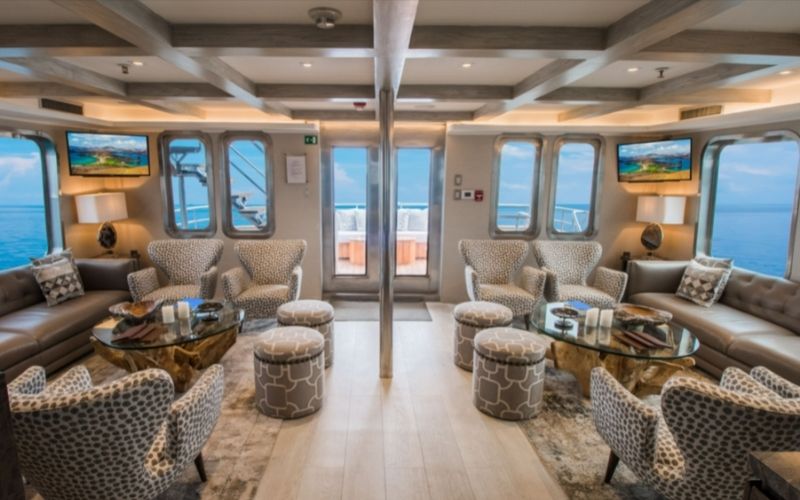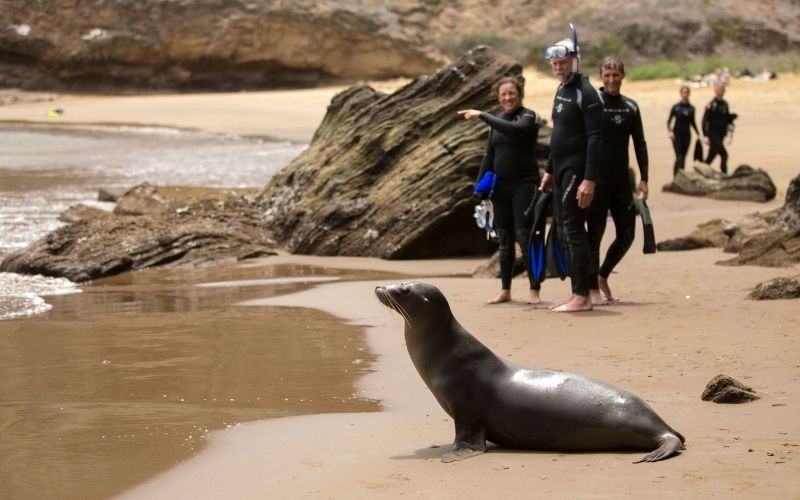SUNDAY I
When you land at Puerto Baquerizo Moreno (SCY) on SAN CRISTOBAL Island, our guides will be there to greet you and escort you to your yacht by bus and Zodiac. Once you’ve boarded, you’ll have a welcome briefing and a short safety drill. As the yacht sets sail, climb to the top deck and enjoy a drink from our sun deck bar to get ready for a circumnavigation at sunset around “Kicker Rock”. Named “Leon Dormido” in spanish (Sleeping Lion), it is a geological formation; an off shore tuff volcanic cone to be precise. Its highest peak reaches about 500 feet, and so is its deepest point surrounding the rock. We find here an array of birds nesting and resting on this rock. Furthermore, we find sea lions on the rock’s flatter side basking under the sun. As we interpret things differently depending on the language we speak, we have given two names to the rock. “Leon Dormido” in Spanish, as it resembles a sleeping lion, and “Kicker Rock” in English as it also looks like a boot. An elegant multi-course dinner, prepared by our accomplished chefs and accompanied by wine, will be served, and you’ll set sail for Genovesa Island.


